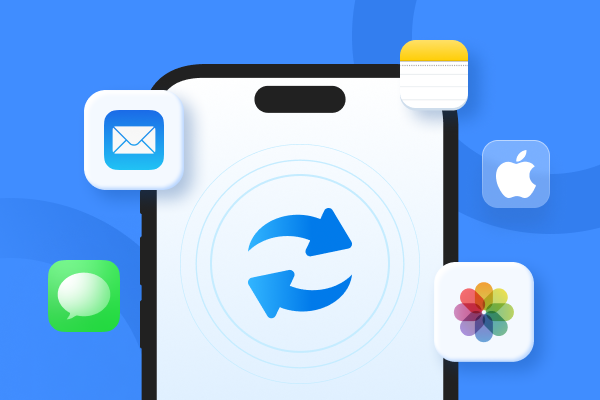How to Quickly Enable and Disable iCloud on iOS, Mac and Windows
With iCloud launched on October12, 2011, Apple makes it unprecedentedly easy to sync, share and send data (documents, photos, music, email, contacts, calendars, bookmarks, notes, etc.) on iOS, Macintosh and Windows devices and manage Apple devices if lost or stolen. It is also a good news for those who fed up with manual iTunes backup. Then here is the question: how do I turn on/off iCloud?
How to Turn iCloud On
To sync personal information across all iOS devices, you need to get on and set up iCloud. Steps of enabling and setting up iCloud are different for iOS devices (iPhone/iPad/iPod touch), Mac and Windows.
No. 1. Turn on iCloud on iOS - For iPhone, iPad and iPod touch
- Make sure your device is running the latest version of iOS.
- Tap Settings icon on the Home screen, select iCloud and enter your Apple ID.
- With iCloud, you can get an iCloud.com account that is up to date everywhere you can check. Turn on Mail in iCloud settings and follow the remained instructions on the screen.
- Enable automatic downloads for your music, apps and books by tapping the Settings icon on the Home screen and select iTunes & App Store.
No.2. Enable iCloud on Mac OS X
- Update to the latest OS X.
- Select "System Preferences" from the Apple menu on your Mac. Click iCloud and enter your Apple ID. Then select the services you want to enable.
- Select Mail in iCloud preferences to get an ad-free iCloud email account.
- Open iPhoto and click the Use iCloud button to enable My Photo Stream and iCloud Photo Sharing.
- Open iTunes on your Mac and choose "Preferences > Store", and then select Music, Apps and Books to enable automatic downloads in iTunes.
No.3. Turn on iCloud on Windows 7/8/8.1/10
- First set up iCloud account on your iOS devices or Mac, then install iCloud for Windows.
- Open iCloud for Windows and sign in with your Apple ID you used to create your iCloud account. Select services that you want to enable such as photo library, iCloud Drive and click Apply.
- Enable iCloud Drive and Photos. After enabling, iCloud for Windows will create new folders for those files, and when you save files in them, your other iOS devices will also automatically sync these files.
After iCloud setup, iCloud will back up data on your devices. The generated iCloud backup is very useful in recovering data for iPhone/iPad/iPod when you accidently deleted or lost files.
How to Turn Off iCloud
Do not want iCloud sync or back up automatically your personal information? Disabling iCloud is very simple. Below is a tutorial on how to shut off iCloud on iPhone, iPad, iPod touch, Mac and Windows 7/8.
No. 1. Disable iCloud on iOS
- Tap on Settings on the Home Screen of your iOS device.
- Select iCloud.
- Scroll down to the iCloud screen and tap on "Delete Account" or "Sign Out".
No.2. Turn Off iCloud on Mac OS X
- Click on Apple logo on the top-left corner of Mac and select System Preferences.
- Click on "iCloud" on iCloud system preferences window.
- Click on "Sign Out".
No.3. Shut Off iCloud on Windows 7
- Click on "Start" menu and "All Programs".
- Find "iCloud" folder and select iCloud application.
- iCloud Control Panel displays. Click on "Sign Out".
No.4. Disabling iCloud in Windows 10/8/8.1
- Go to Start screen and select "iCloud" application on Windows 8/8.1.
- Click on "Sign Out" to turn off your iCloud.
Speak Your Mind
Leave a Comment
Create your review for Tenorshare articles







